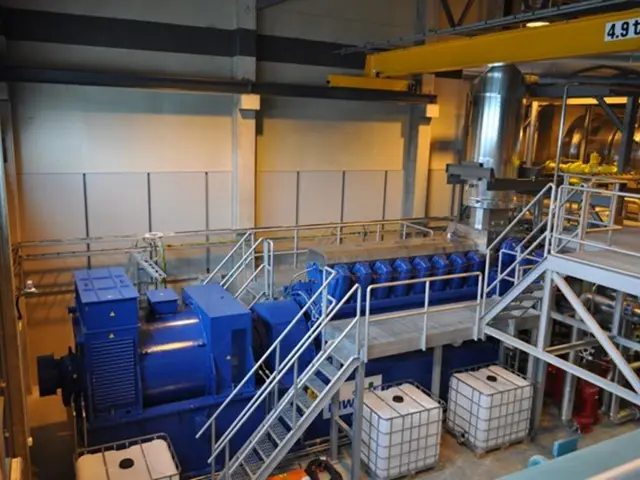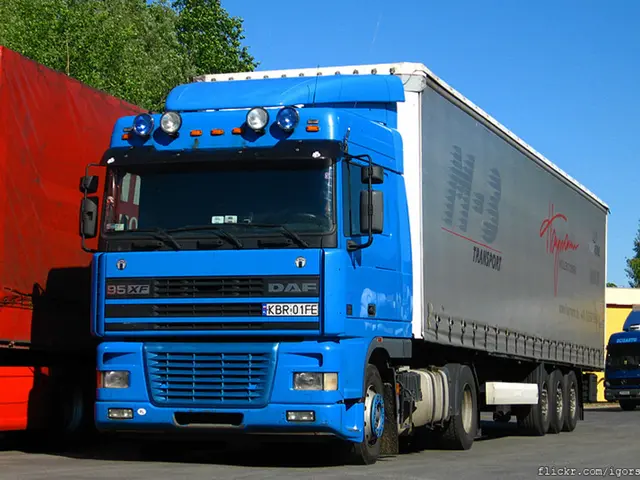Implementing auditory and visual signals to minimize wildlife encounters along transportation routes - Track Mishaps Signaled by Beeps and Blinks
Railway Line from Frankfurt to Cologne Employs Wildlife Warning Devices to Reduce Accidents
Optical-acoustic warning devices installed along a stretch of the ICE route between Frankfurt and Cologne have led to a significant reduction in wildlife accidents on this section. According to the Hessian State Hunting Association, this area is among the nation's hotspots for collisions between trains and deer, wild boar, and other wildlife.
The railway installed around 300 warning devices over 20 kilometers between Medenbach and Niederselters in the Hessian Taunus region in the summer of 2023. A railway spokesperson noted the positive effects observed in this area.
When triggered by an approaching train, these devices emit a high-frequency beep to alert nearby wildlife and flash blue lights during nighttime hours. The ICE itself may go unnoticed by wildlife, and this device aims to mitigate this risk.
The Hessian State Hunting Association has also been proactive in using wildlife cameras to identify areas with heavy wildlife traffic. By increasing hunting activity at these locations, they aim to make them less attractive to animals. Jürgen Ellenberger, president of the association, explains that the mere presence of human scent can deter animals from sensitive areas.
Statistics provided by the State Hunting Association illustrate the severity of wildlife accidents on this stretch. Approximately 30 such incidents occur each year, with deer accounting for 80% and wild boar for 20%. While this number may be less than on roads, it still results in animal suffering, train delays, lengthy track inspections, and delayed subsequent trains.
The wooded sections between the track and the nearby A3 motorway are believed to contribute to the high number of accidents, as they offer ideal hiding places for deer and wild boar. These areas have few distractions like mountain bikers, joggers, or unleashed dogs.
Psychological consequences for train drivers may also arise from such accidents, especially when it is unclear what exactly transpired. For example, a recent collision near Kirn, Rhineland-Palatinate, left the driver with a minor shock and required relief. DB has resources available for employees who require psychological support following such incidents.
Advanced technologies, such as Distributed Acoustic Sensing (DAS), optical sensors, AI, and IoT, can help further improve the effectiveness of wildlife warning systems. These technologies enable proactive monitoring, precision, and adaptability to changing conditions, thereby enhancing safety and reducing the risk of accidents. However, specific details about the use of these technologies on the ICE route from Frankfurt to Cologne have not been made available.
- As the railway line from Frankfurt to Cologne employs wildlife warning devices to reduce accidents, environmental-science researchers could explore the impact of similar technologies in the development of the fisheries sector in nearby communities, promoting sustainable industry practices and reducing environmental harm.
- To address the frequent wildlife accidents along the Frankfurt-Cologne rail route and other classifications of environmental impact, finance should be allocated for the implementation of advanced technologies such as DAS, optical sensors, AI, and IoT, which could enhance the environmental-science field and promote the progression of environmental studies within the industry.
- To further expand community aid in the development of the fisheries sector while minimizing negative impacts on the environment, transportation systems within these communities could adopt technological innovations—like the wildlife warning devices on the Frankfurt-Cologne rail route—to ensure the ecosystem's equilibrium remains undisturbed, ensuring a balance between industry advancement and conservation efforts.








